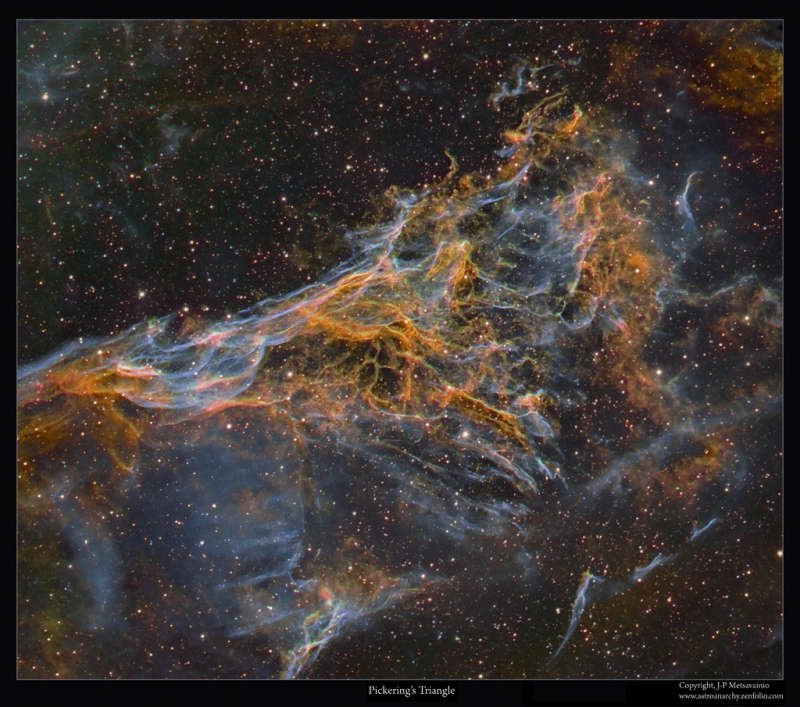Credit & Copyright: J-P Metsävainio
(Astro Anarchy)
Explanation:
Chaotic in appearance,
these filaments of shocked, glowing gas break across
planet Earth's sky toward the constellation of Cygnus, as
part of the Veil
Nebula.
The Veil Nebula itself is a large
supernova remnant, an expanding
cloud born of the death explosion of a massive star.
Light from the original supernova explosion likely reached
Earth over 5,000 years ago.
Blasted out in the cataclysmic event, the interstellar shock waves
plow through space sweeping up and exciting interstellar material.
The glowing filaments are really more like long ripples in a sheet seen
almost edge on, remarkably well separated into
the glow of ionized hydrogen and
sulfur atoms shown in red and green, and oxygen in blue hues.
Also known as the Cygnus Loop, the
Veil Nebula now spans
nearly 3 degrees or about 6 times the diameter of
the full Moon.
While that translates to over 70 light-years
at its estimated distance of 1,500 light-years, this field
of view spans less than one third that distance.
Identified as Pickering's Triangle
for a director of Harvard College Observatory
and cataloged as NGC 6979, the complex of filaments might be more
appropriately known as Williamina
Fleming's
Triangular Wisp.
1999 2000 2001 2002 2003 2004 2005 2006 2007 2008 2009 2010 2011 2012 2013 2014 2015 2016 2017 2018 2019 2020 2021 2022 2023 2024 2025 |
Январь Февраль Март Апрель Май Июнь Июль Август Сентябрь Октябрь Ноябрь Декабрь |
NASA Web Site Statements, Warnings, and Disclaimers
NASA Official: Jay Norris. Specific rights apply.
A service of: LHEA at NASA / GSFC
& Michigan Tech. U.
|
Публикации с ключевыми словами:
supernova remnant - остаток Сверхновой - Veil Nebula - туманность Вуаль
Публикации со словами: supernova remnant - остаток Сверхновой - Veil Nebula - туманность Вуаль | |
См. также:
Все публикации на ту же тему >> | |
